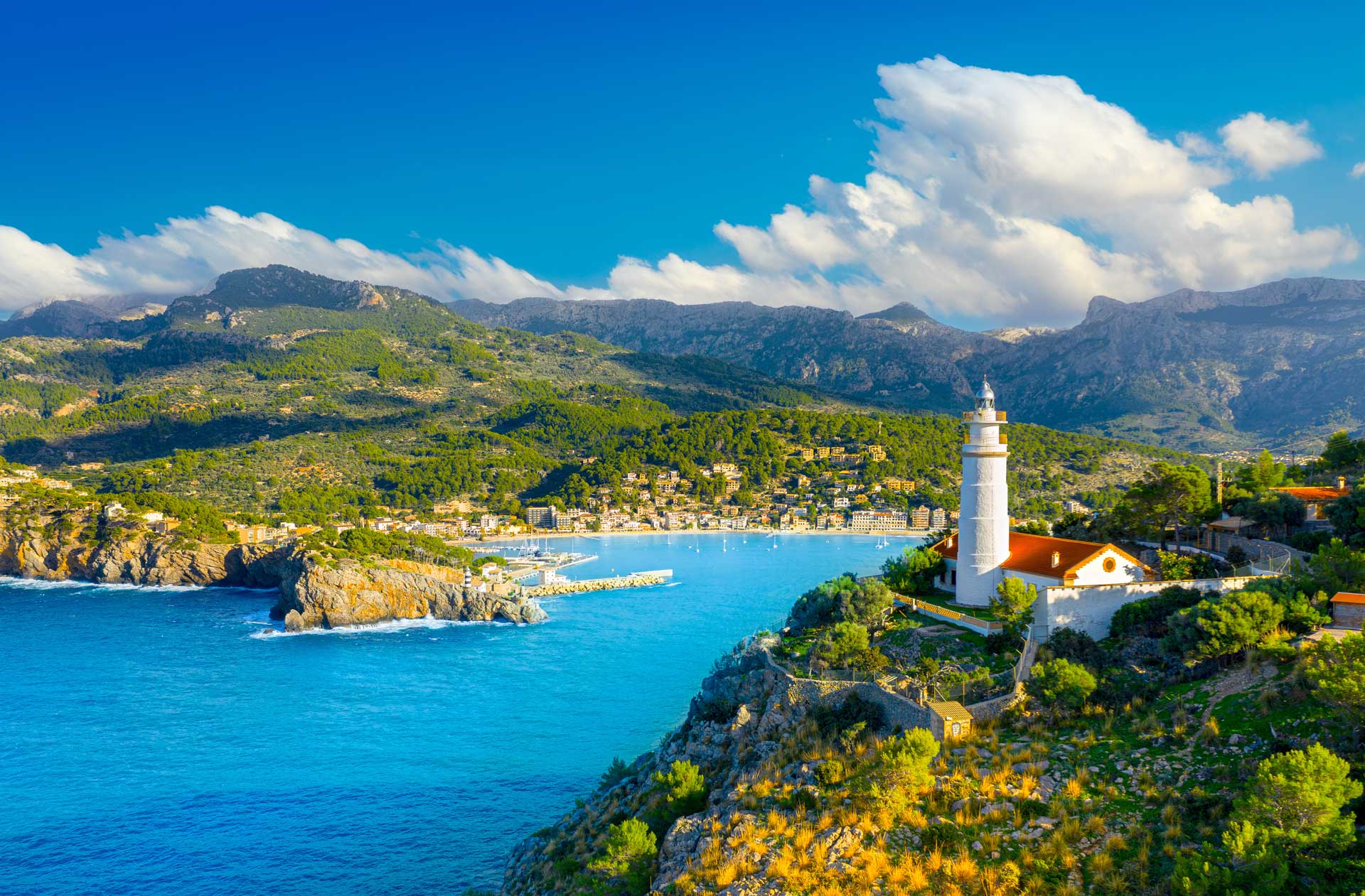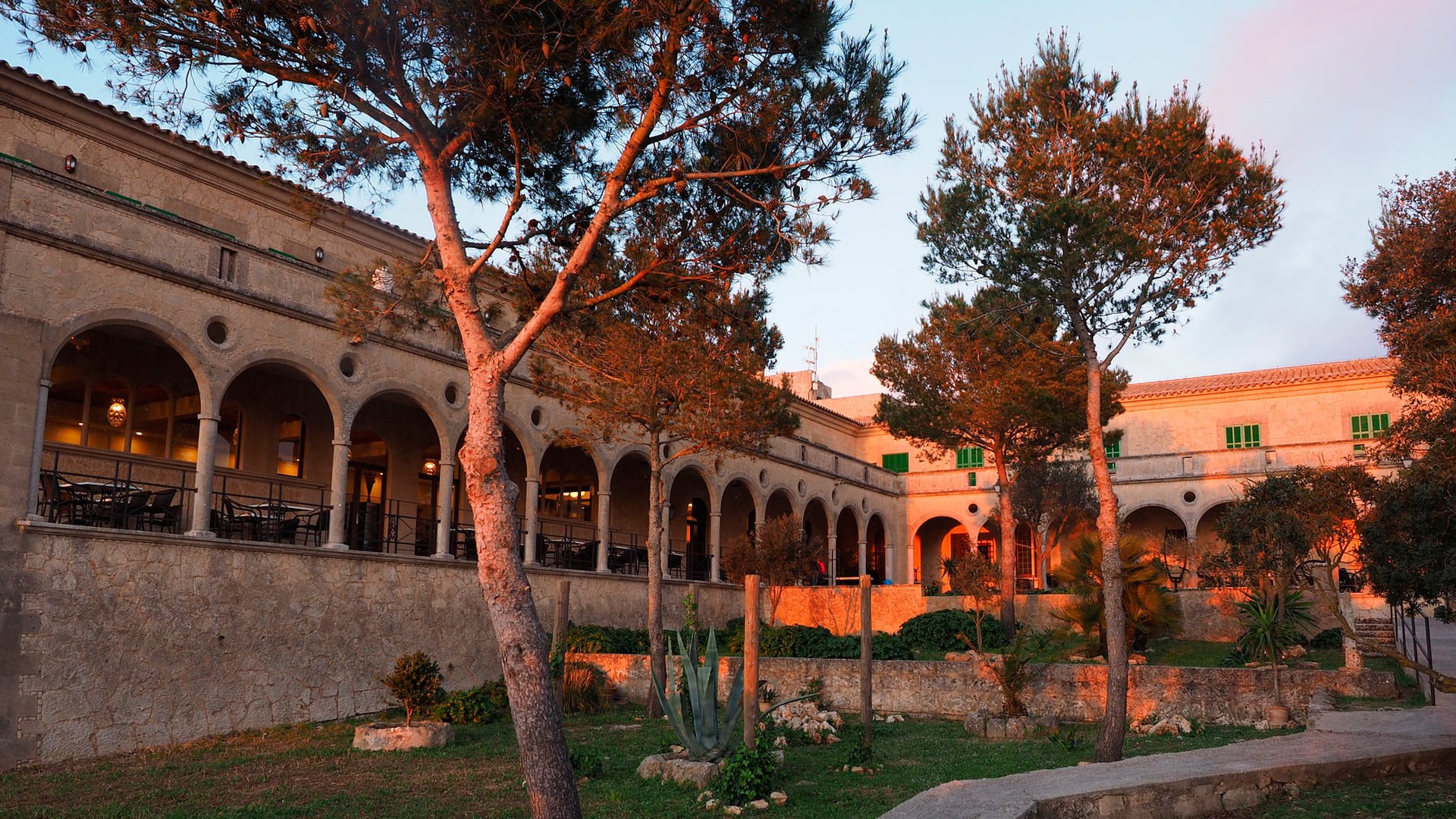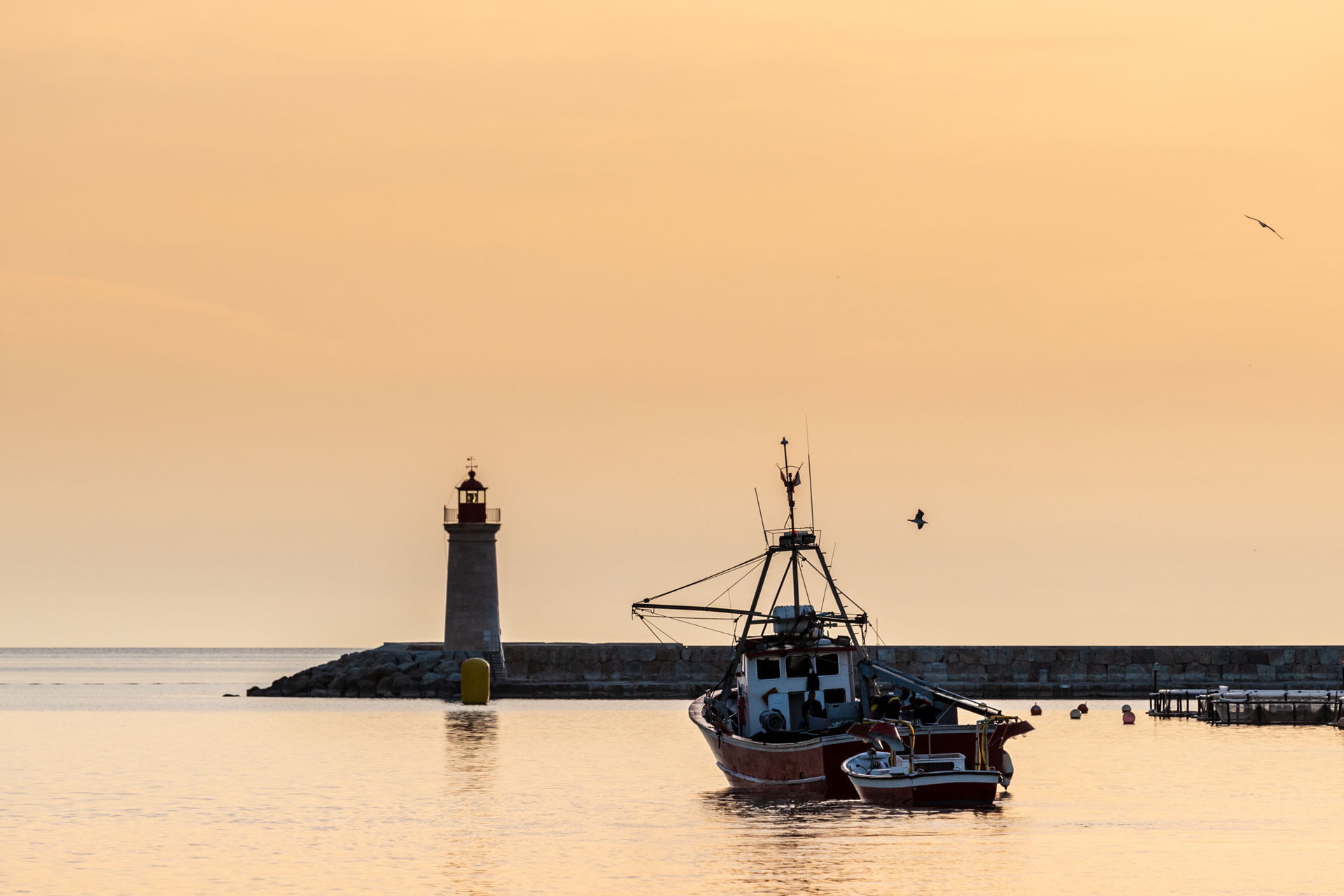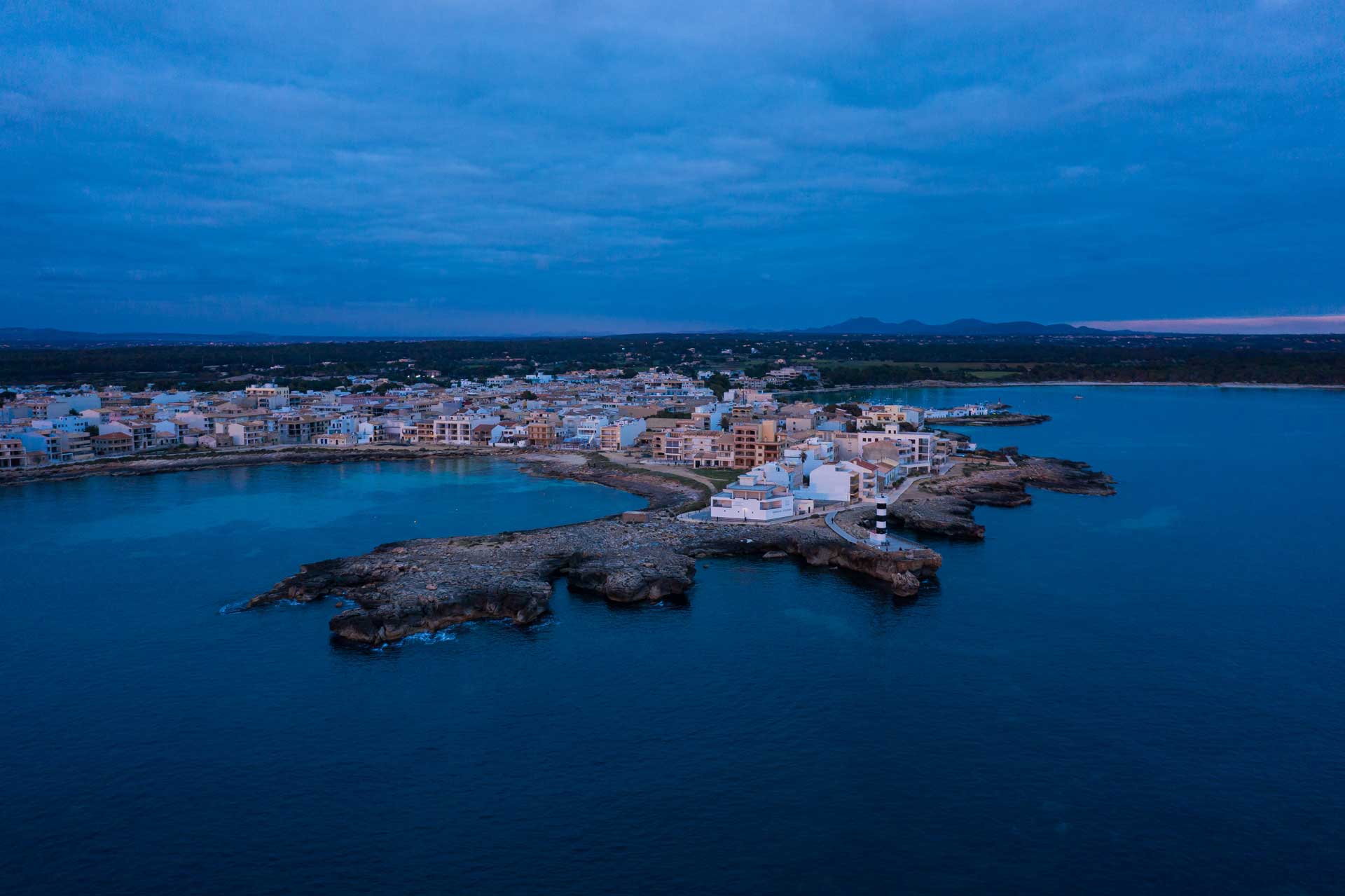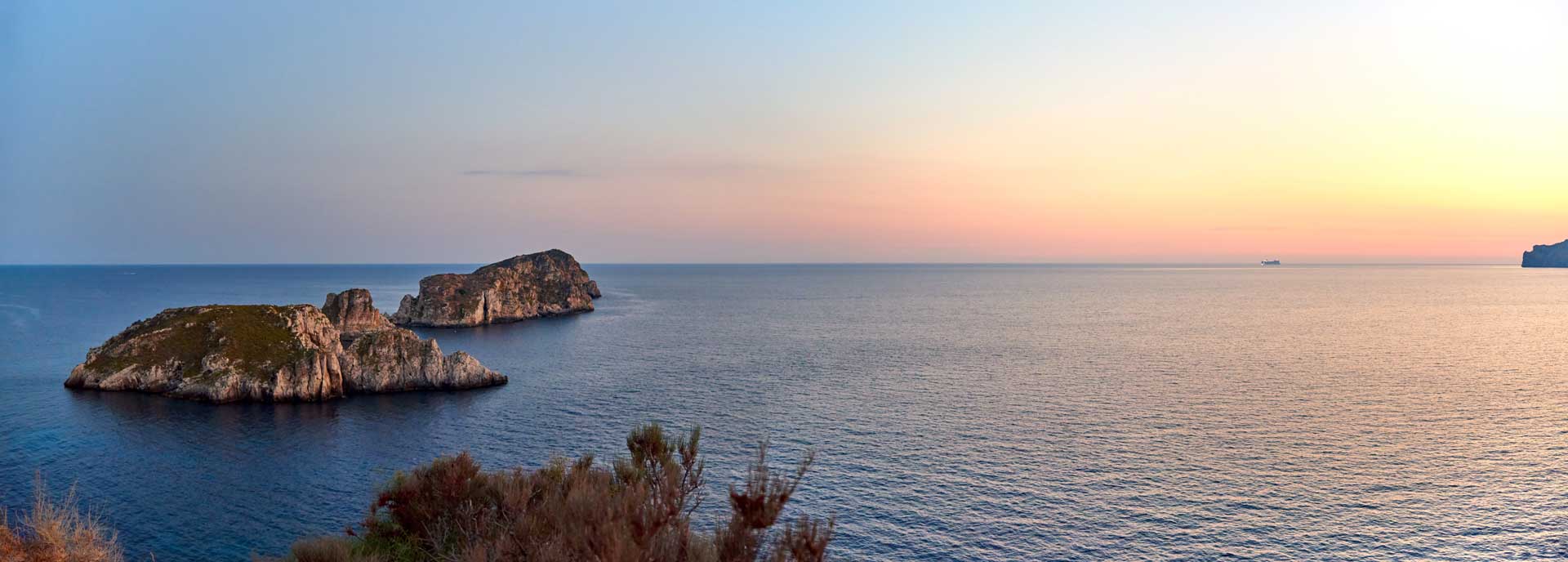La Playa de Palma is one of Mallorca’s most recognizable coastal destinations. It stretches for almost five kilometers of white sand between the towns of Can Pastilla and s’Arenal, on a stretch of coastline shared by the municipalities of Palma and Llucmajor. Its proximity to the airport and the historic center of the capital, together with its wide range of services, have made it one of the most popular areas for visitors of all kinds.
This seafront has evolved over time: from being a hub for mass tourism in the decades of rapid development, it has gradually incorporated elements of sustainable mobility, local cuisine, outdoor sports, and urban renewal, without losing the festive character that has made it popular with generations of travelers, especially German visitors.
More than just a beach, it is a dynamic collection of connected spaces: quiet areas by the sea, shaded promenades, traditional bars, renovated hotels, and small family businesses coexist with an infrastructure designed to welcome visitors without sacrificing the identity of the environment.
Playa de Palma is not just a destination for sun and swimming: it is also a gateway to the city, the inland villages, and the possibility of combining relaxation, activity, and Mallorcan culture in one place.
Five-star hotels and quality accommodation in Playa de Palma
Although traditionally associated with accessible, family-friendly tourism, Playa de Palma has undergone a significant transformation in recent years in terms of its hotel offering, with the opening and renovation of several five-star hotels that have raised the standard of service and comfort in the area.
These establishments, mainly located between Can Pastilla and Les Meravelles, have opted for contemporary architecture, careful design, and personalized services, aimed at visitors seeking tranquility, well-being, and good food without sacrificing proximity to the sea.
Among the most notable hotels are the Iberostar Selection Llaut Palma, with a full spa, panoramic terrace, and signature restaurant; the Pure Salt Garonda, an adults-only hotel with direct access to the beach and a gastronomic offering based on quality products; and the HM Ayron Park, which combines modern design, rooftop pools, and green spaces for relaxation. All of them offer high-quality rooms, wellness areas, peaceful swimming pools, and discreet service, aimed at a discerning traveler.
This evolution is not limited to accommodation. The range of quality options in Playa de Palma increasingly includes restaurants with a revamped Mediterranean menu, beach bars with healthy options, specialty shops, and beach clubs with a relaxed atmosphere. The urban environment has also been modernized: more accessible promenades, new green spaces, and a strong push for sustainable mobility have made the overall visitor experience more comfortable and authentic.
For those who wish to complement their stay by the sea with a more leisurely experience inland, it is possible to combine a few days in Playa de Palma with a getaway to Finca Treurer, a superior rural accommodation located just 15 minutes by car, in the heart of the municipality of Llucmajor. Surrounded by olive trees and traditional agricultural landscapes, this finca offers not only rest and relaxation, but also a cultural immersion in the world of extra virgin olive oil, with guided tours, tastings, dinners featuring local products, and a serene atmosphere impossible to find in more crowded areas.
This combination—beach and rural estate—allows travelers to create a balanced stay: begin your trip with the dynamism and services of the coast, and end it with the calm, flavor, and authenticity of the Mallorcan countryside.
Geography and characteristics of the beach
Playa de Palma stretches almost uninterrupted from Can Pastilla to s’Arenal, along a coastline just over four and a half kilometers long. It is a wide strip of fine, light-colored sand with a gentle slope that allows you to walk into the water without any steep drops, making it particularly suitable for families with children and those looking for a peaceful swim in a safe environment.
The beach is organized into numbered sections known as “balnearios”, a typical name for the area that does not refer to thermal centers, but to small service points distributed between numbers 1 and 15. These balnearios offer showers, toilets, sun loungers, umbrellas, and kiosks with drinks and snacks. Some of them have become popular meeting places, such as balneario 6, historically associated with young, party-going tourists.
A wide, tree-lined promenade runs along the entire length of the beach, connecting the different coastal neighborhoods and providing easy access on foot, by bicycle, or by electric scooter. This pedestrian route extends to the center of Palma, on a route that is very popular with both tourists and local residents who take advantage of the wide promenade to play sports or simply walk along the sea.
The immediate surroundings combine urbanized areas with easy access and partially restored dune vegetation, allowing you to alternate between livelier spaces and more natural ones. The beach has a Blue Flag in several of its sections, a sign of the quality of its waters, services, and accessibility.
Overall, Playa de Palma offers an urban beach with all the amenities, but with elements that also make it comfortable for those seeking moments of rest away from the hustle and bustle. Its size, cleanliness, spaciousness, and good connectivity make it one of the most versatile beaches on the island.

Atmosphere and types of visitors
One of the most characteristic aspects of Playa de Palma is the diversity of people who enjoy its coastline. Far from catering to a single type of tourist, the area has evolved to welcome both traditional German visitors, who return year after year, and new generations, local families, sports enthusiasts, and travelers looking to combine beach and city life.
Closest to Palma, the center of Can Pastilla has a relaxed, family atmosphere. Here you will find medium-sized hotels, bakeries, ice cream parlors, cafés open all year round, and quieter stretches of beach. The area is also popular with city residents, who take advantage of its proximity to walk, swim, or eat by the sea.
Further east, in the area of Les Meravelles and Ses Cadenes, the atmosphere becomes a little livelier, with bars, terraces, beachwear shops, and a higher concentration of young tourists. Even so, it remains an area suitable for all audiences, especially outside the months of July and August. Here you can feel the mix of daytime leisure and local life that does not disappear in winter.
The final stretch, in the municipality of Llucmajor, corresponds to s’Arenal, historically associated with more festive tourism, especially among German visitors. Although this image persists, in recent years there has been a push to renovate the promenade and some of the hotels, with a view to offering more balanced, clean, and sustainable services without losing the accessible character that has defined the area.
Playa de Palma has been a benchmark for German tourism for decades, not only because of its proximity to the airport and the ease of language, but also because of a well-established network of businesses that are familiar with their habits. However, this link does not prevent other types of visitors from coexisting naturally, from cycle tourists and retirees to young couples and families.
The result is a coastal area with a life of its own all year round, where visitors can choose between hustle and bustle or tranquility, between a morning stroll and a night out with music, between the routine of the neighborhood and the pleasures of the sea.
Practical tips for visitors
Visiting Playa de Palma can easily be adapted to different travel styles, whether it’s a short getaway, a family vacation, or a longer stay combined with activities throughout the island. Its proximity to the airport and good public transportation network make it a convenient area to stay, especially for those who value accessibility, services, and a variety of options in one place.
For those looking for a quieter atmosphere, we recommend staying in the Can Pastilla area or in the first few blocks of Les Meravelles, where local life is more present and the pace is more relaxed. During the summer months, it is also best to avoid the area around balneario 6, where the atmosphere can be noisier and less suitable for those traveling with families or looking for a restful break.
The best time to visit Playa de Palma depends on the type of experience you are looking for. Between April and June, as well as in September and October, temperatures are pleasant, the beach is less crowded, and prices are more reasonable. In July and August, occupancy is high, the atmosphere is livelier, and some areas can become crowded, especially in the afternoon.
It is useful to bring light clothing, sunscreen, and comfortable shoes for walking along the promenade or exploring by bike. Many hotels offer bike rental services or have agreements with rental shops. It is also advisable to book in advance during high season, both for accommodation and for some guided activities or excursions to the interior of the island.
For those who wish to complement their beach stay with a more cultural or gastronomic experience, it is very easy to organize half-day visits to Palma, cycling routes to Llucmajor, or getaways to rural areas where you can discover Mallorca’s traditional agricultural landscape. In this sense, Playa de Palma allows you to move around independently, make the most of your time, and enjoy an active stay without having to travel far.
Activities and leisure
Playa de Palma offers much more than sun and sand. Its length, accessibility, and urban setting have encouraged the development of a wide range of activities, both sporting and recreational, allowing visitors to stay active or simply enjoy the surroundings in a relaxed way.
The sea offers a wide range of safe options. Along the beach, you can rent paddle surfboards, kayaks, water scooters, and light boats, which are ideal for exploring the coast from the water without any previous experience. There are also specialized companies that organize guided jet ski tours and introductory sessions to windsurfing and parasailing, especially in the areas that are more open to the wind.
The wide, flat promenade is one of the busiest on the island. It is common to see runners, cyclists, skaters, and walkers here at all hours of the day. The bike lane connects directly to the center of Palma, offering a ten-kilometer route along the sea, which is highly valued by both locals and tourists. You can rent bikes or electric scooters at multiple locations, as well as book guided group tours.
For those traveling with families, the area has several options designed for children. Very close to s’Arenal is Aqualand El Arenal, one of the largest water parks on the island, with slides, children’s areas, and rest areas. There are also amusement parks, mini golf, go-kart tracks, and playgrounds on the promenade itself.
In the afternoon and evening, Playa de Palma changes pace. The terrace bars, cafés, and beach bars come alive with soft music, cocktails, and a relaxed atmosphere facing the sea. In high season, some venues offer live music or small DJ sessions, especially in the sections between spas 4 and 8.
Those looking for a more active night out will also find nightclubs in specific areas of s’Arenal and Les Meravelles, although the recent trend has been towards more restrained, regulated entertainment aimed at a diverse audience, without sacrificing atmosphere but offering a more refined experience.
Overall, Playa de Palma combines sport, leisure, relaxation, and social life in a way that allows visitors to design their own experience, whether active, family-oriented, or contemplative.
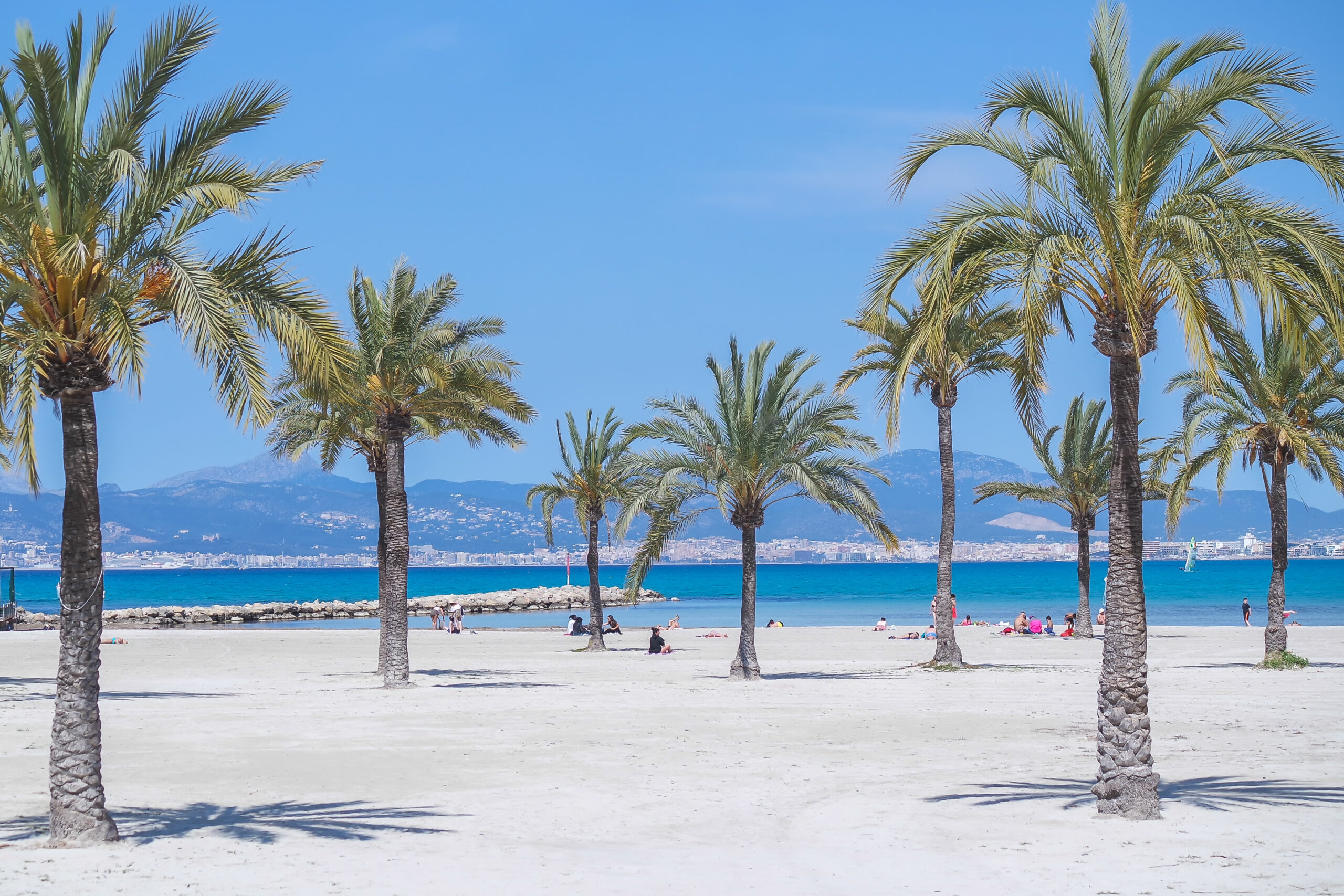
Connections to Palma and the airport
One of the great attractions of Playa de Palma is its excellent connectivity, both to the city center and to Son Sant Joan Airport, located less than 10 minutes away by car. This proximity allows many travelers to reach their accommodations shortly after landing, without the need for long journeys or logistical complications.
Public transportation also makes it easy to get to from Palma. Bus lines 23, 25, and A2 connect different parts of the beach with the city center or directly with the airport, running regularly throughout most of the year. The A2 line, in particular, is a direct and convenient option for getting from the airport to Can Pastilla, Les Meravelles, or s’Arenal without having to change buses.
For those who prefer to travel at their own pace, Playa de Palma has a well-maintained network of bike lanes that runs along the entire seafront promenade and connects directly to the bike lane that skirts the bay of Palma to the historic center. This route is very popular with both tourists and residents, as it allows you to travel safely and enjoy the coastal landscape without the use of vehicles.
The bike ride from Can Pastilla to Palma Cathedral takes approximately 30 minutes and runs almost entirely along the sea, passing through parks, gardens, and viewpoints. It is also common to see electric scooters for hire, available through mobile apps, which allow for quick trips between different points on the beach or to the city.
In addition, many hotels and establishments offer transfer or car rental services, allowing you to comfortably explore other areas of the island, such as the rural interior, the Tramuntana mountains, or more secluded beaches in the south.
In short, Playa de Palma offers smooth and easy mobility, ideal for those who want to combine relaxation with urban exploration, or for those who value getting to their accommodation quickly without sacrificing good connections throughout their stay.
What is the weather like in Playa de Palma?
The climate in Playa de Palma is typically Mediterranean, with hot summers and mild winters. The region offers the most hours of sunshine and the highest temperatures in the months from June to September.
In summer, temperatures can exceed 30 degrees, while the winter months are milder, with temperatures around 15 degrees.
The sea remains warm enough for swimming well into the fall.
Therefore, the best time for a beach vacation is from May to October. However, those who want to escape mass tourism will also find pleasant conditions for a quieter vacation in spring or fall.
Hotels and accommodation
Playa de Palma has one of the widest ranges of hotels in Mallorca, the result of decades of tradition in tourism and continuous transformation to adapt to new visitor profiles. Along its seafront promenade and adjacent streets, there are hotels of different categories, from all-inclusive establishments geared towards family stays to renovated boutique hotels with modern design and personalized services.
In areas such as Can Pastilla and Ses Cadenes, many accommodations have been renovated in recent years, incorporating sustainable materials, improvements in energy efficiency, and greater attention to comfort and design. This modernization has been accompanied by an improvement in public spaces, such as the promenade, bike lanes, gardens, and beach access, which has significantly enhanced the visitor experience.
Tourist apartments and small hostels have also been developed, allowing for more flexible stays, especially for those seeking independence or traveling for longer periods. Some are run by local families, which encourages a friendly atmosphere and a more direct knowledge of the area.
Those who want to enjoy Playa de Palma but stay in a more peaceful and rural setting can look for accommodation in the interior of the municipality of Llucmajor, just a few minutes’ drive away. There, fincas and agrotourism establishments offer a different experience, in contact with nature and with a more cultural and gastronomic focus.
In this regard, Finca Treurer is a particularly interesting option for those who want to combine relaxation on the coast with an immersion in agricultural and olive-growing Mallorca. Located in a peaceful setting among farmland, this estate offers high-quality accommodation, guided tours focused on the production of extra virgin olive oil, and dinners featuring local products, all in a serene and authentic atmosphere.
Staying in Playa de Palma—or nearby—allows travelers to combine accessibility, services, and a variety of experiences without sacrificing relaxation, authenticity, or the discovery of lesser-known spots.

Recent history and urban transformation
The tourist history of Playa de Palma is closely linked to the economic development of the island during the 20th century. It was in the 1960s and 1970s when this area, which until then had been made up of small coastal towns and agricultural areas, began to transform into one of the main attractions for European tourism, especially from Germany.
The original model was based on the rapid construction of large hotels and apartments, designed to cater to sun and beach tourists looking for affordable prices and proximity to the sea. This expansion, which responded to the logic of the time, left behind a dense urban fabric, with areas lacking clear planning and an excessive dependence on seasonal tourism.
In the 2000s, the first attempts at urban redevelopment and improvement of the quality of public spaces began. Local authorities, together with the private sector, began a process of infrastructure renovation, improvement of the hotel offer, recovery of green areas, and establishment of more sustainable criteria. These interventions have had a visible impact in areas such as Can Pastilla and Les Meravelles, where the seafront promenade has been remodeled, non-motorized mobility has been reinforced, and new cultural and commercial spaces have been opened.
At the same time, efforts have been made to reorient the tourism model, gradually reducing the promotion of activities associated with so-called “excessive tourism” and encouraging a more diverse visitor profile, also interested in sports, gastronomy, culture, and the natural environment. This transition has not been immediate, but it has been constant and has led to an improvement in the overall atmosphere, especially in the mid-season.
Playa de Palma is currently in a phase of consolidation of these changes. New hotels have opted for sustainable designs, there is greater control over nightlife establishments, and progress has been made in raising visitor awareness of a more respectful and balanced form of tourism.
All in all, Playa de Palma remains a lively area undergoing transformation, where the weight of its tourist history coexists with a present that seeks new ways to preserve the environment, foster coexistence, and maintain its long-term appeal.

